The classic Dual 601 turntable isn’t as well-known as contemporaries from Thorens and Rega, but it is a great turntable.
Features
The Dual 601 is a lovely belt-drive deck and offers quite a bit that other contemporaries don’t in terms of deck automation, vernier speed adjustment and noise isolation.
I should note that these decks are reasonably maintenance-heavy, so they may not be the best choice for someone who wants to play records and just forget about getting their turntable serviced.
Dual 601 Specifications
Courtesy of the Vinyl Engine
Drive: 8-pole Dual synchronous motor with precision flat belt to platter base
Starting time: approx 2 seconds to 33 1/3rpm
Platter: 305mm, 1.3kg, non-magnetic
Speeds: 33 1/3 and 45 rpm
Pitch control variation: one semitone (6%)
Speed control: illuminated stroboscope
Wow and flutter: < 0.08%
Rumble: >63dB weighted
Tonearm: torsion-resistant tubular aluminium in self-adjusting pivot bearing
Dimensions: 420 x 148 x 365mm
Weight: 7.6kg
Common Problems
The Dual 601 has a very common problem, whereby the tonearm doesn’t return properly at the end of a record. Automatic decks such as the 601 typically have complex mechanisms to return the tonearm to its resting point and wear and degradation of these mechanisms is to blame for the strange behaviour.
In this case and with Dual decks, a small rubber ‘button’ wears out and perishes, falling off the small lever it is originally attached to. This, in turn, causes the arm not to be grabbed by the return mechanism and therefore not return to its rest point. This problem is resolvable once you know what to look for and how to repair it. I have a few pics here of the deck in various stages of disassembly.
I’ve described a similar issue and repair of another Dual 601 here.
Once inside, there are numerous lubrication points and adjustments to be made. It is very important to use the correct lubricant at each lubrication point and not to skimp on this time-consuming step. The factory service manual specifies five or six different lubricants, and I have modern equivalents for these here in the workshop.
This Dual 601 needed the very typical deep clean and service, including spindle bearing maintenance, fresh synthetic oil, greasing and oiling of various other points and a few small adjustments before receiving an exterior clean and calibration of the tonearm and cartridge alignment.
Results
Once this work was complete, the Dual 601 ran and played records beautifully. A few images describing some of these steps follow.
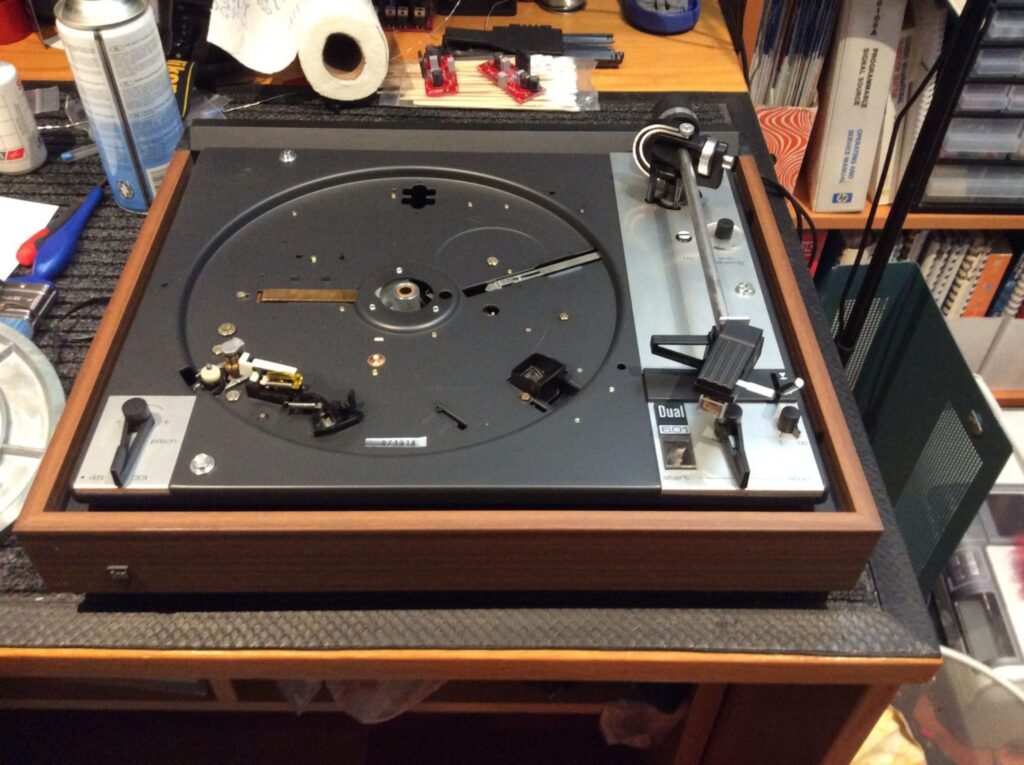

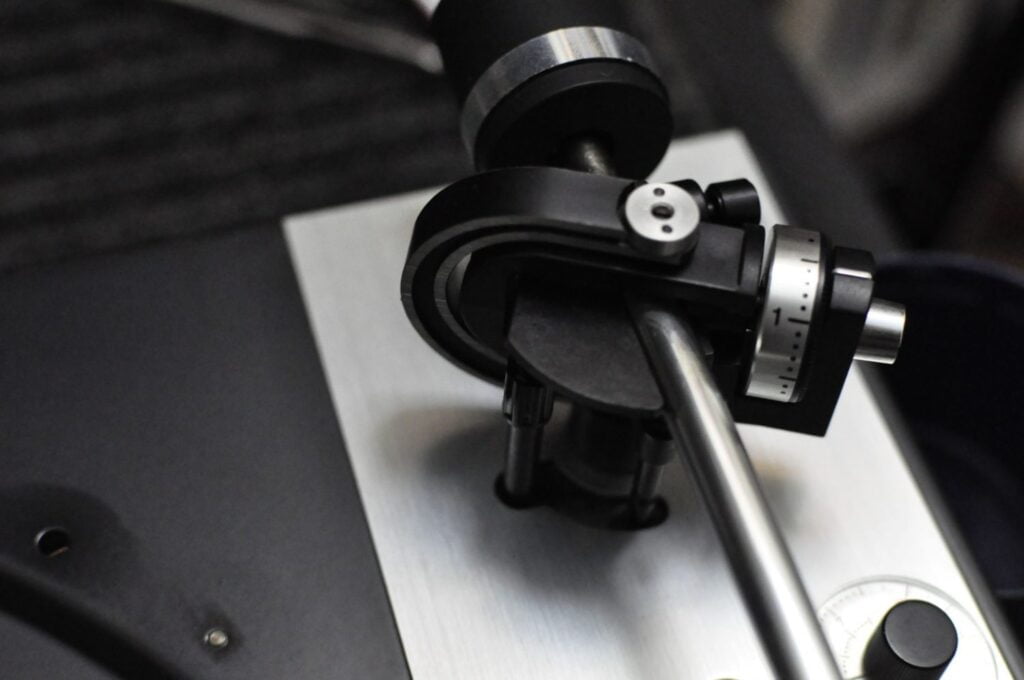
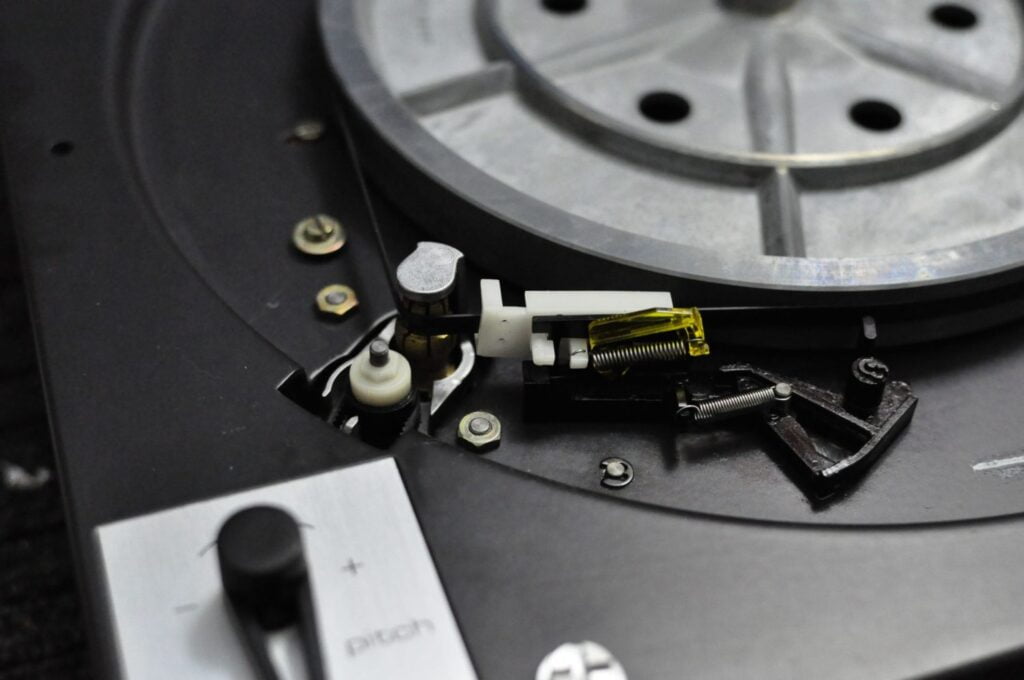
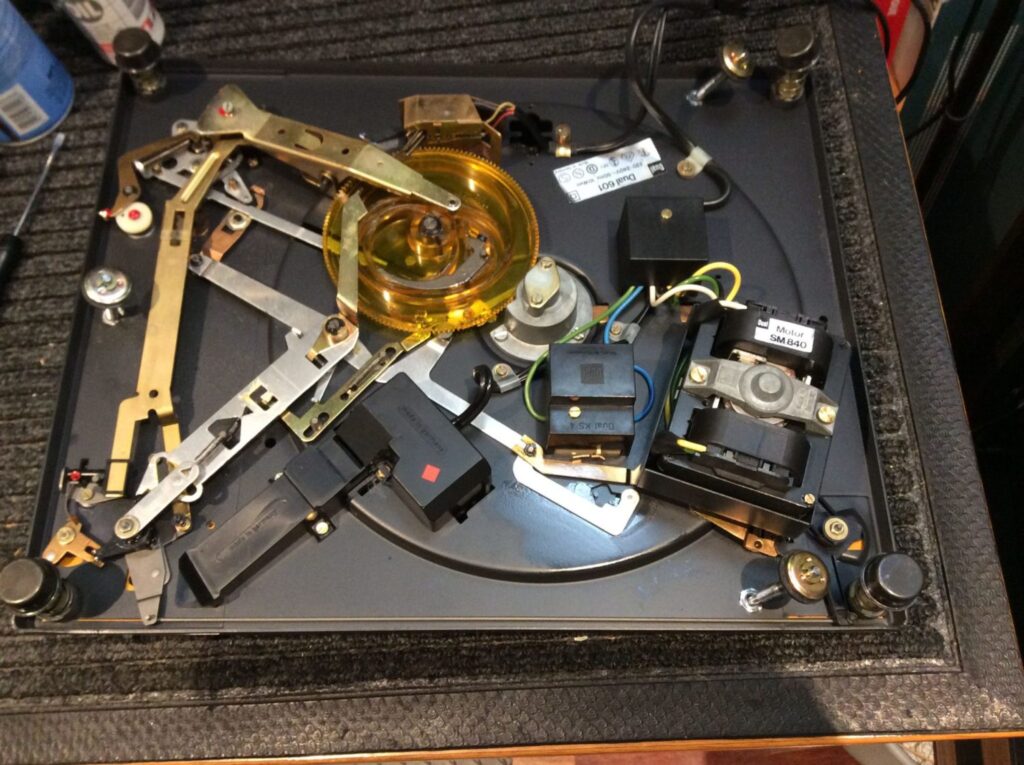
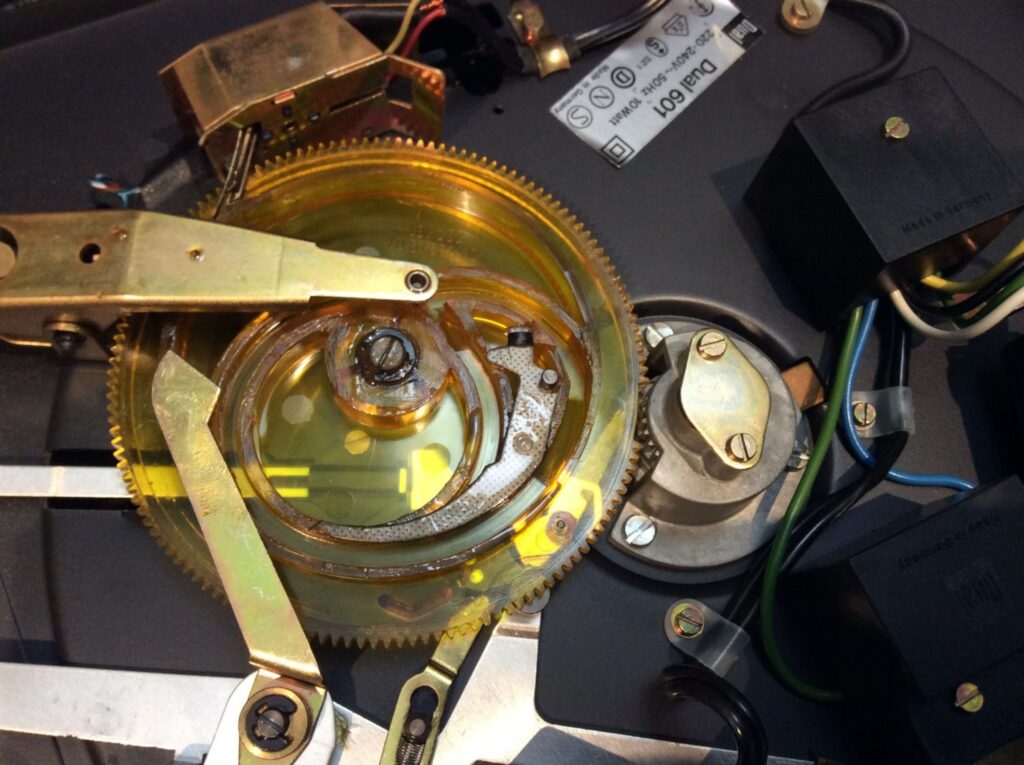

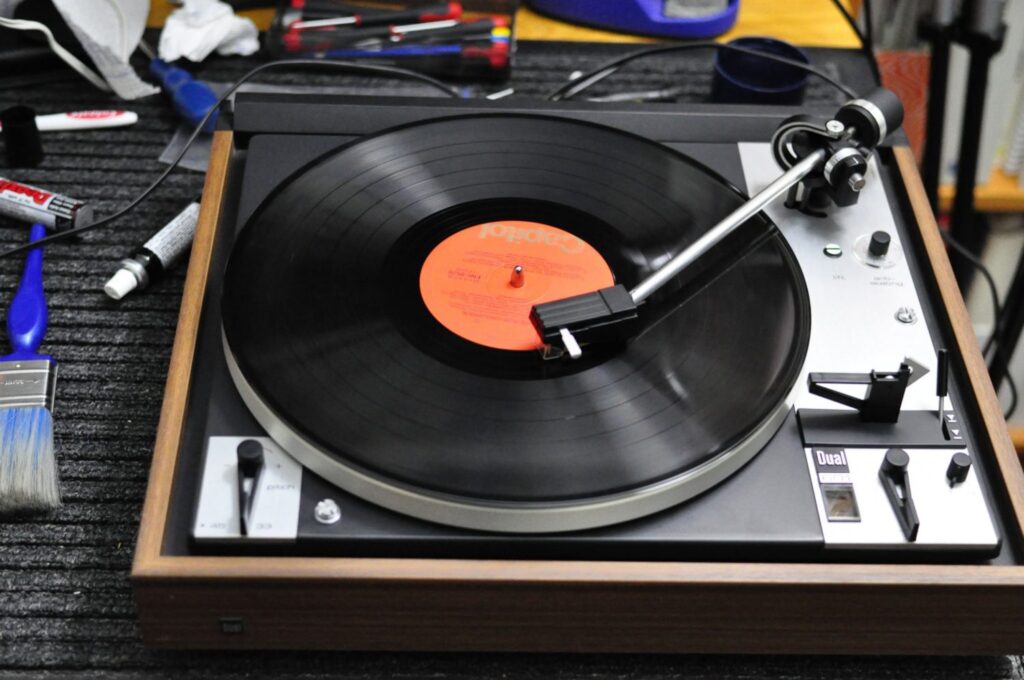
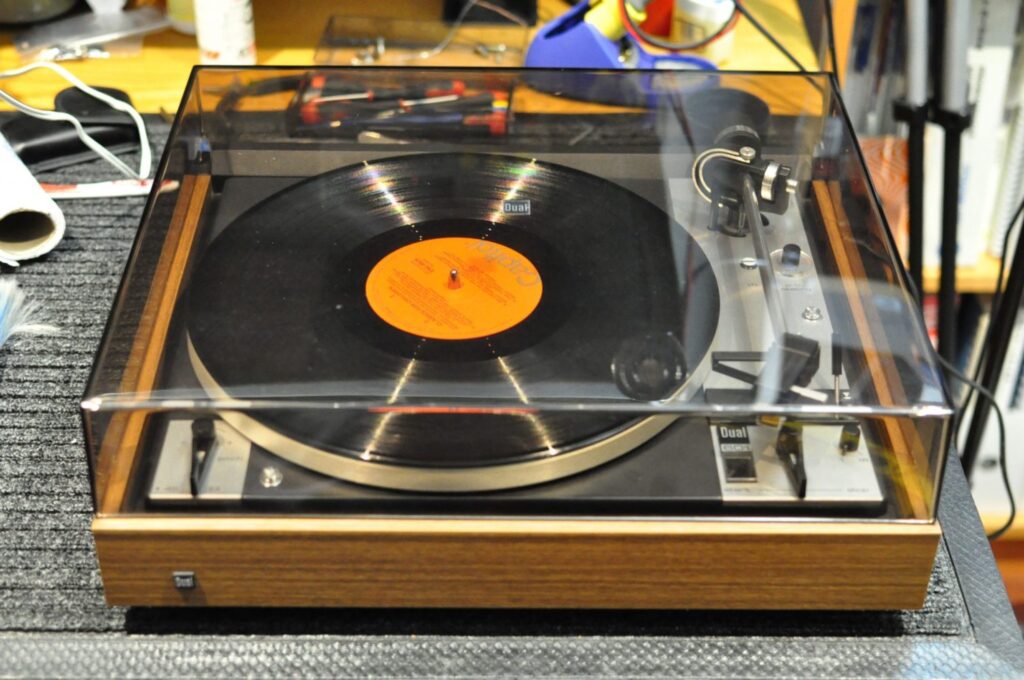
Discover more from LiQUiD AUDiO
Subscribe to get the latest posts sent to your email.

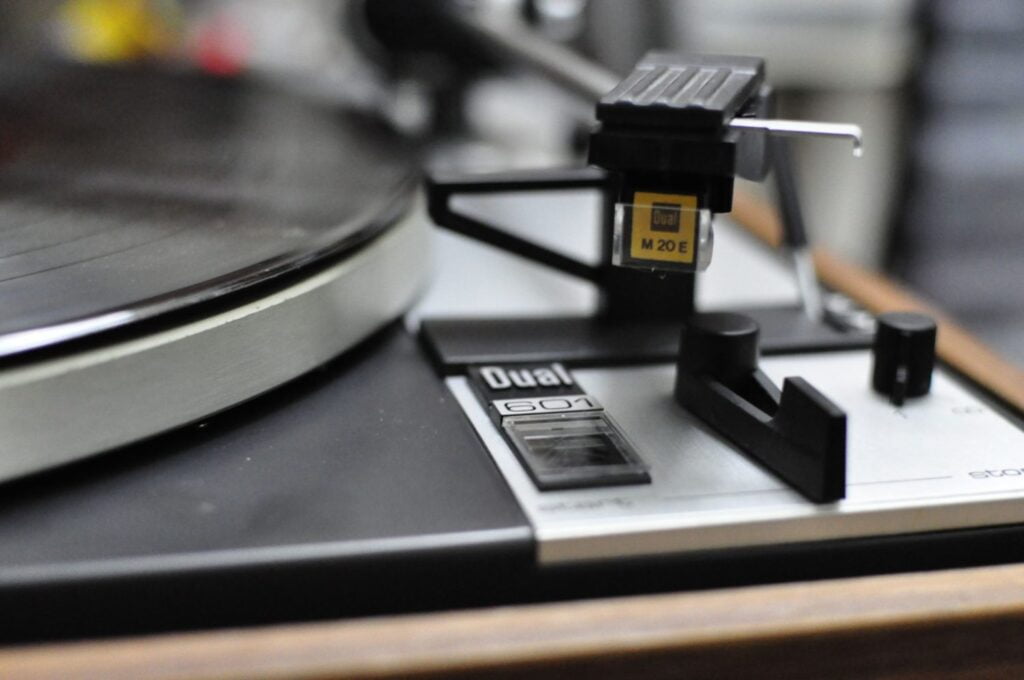
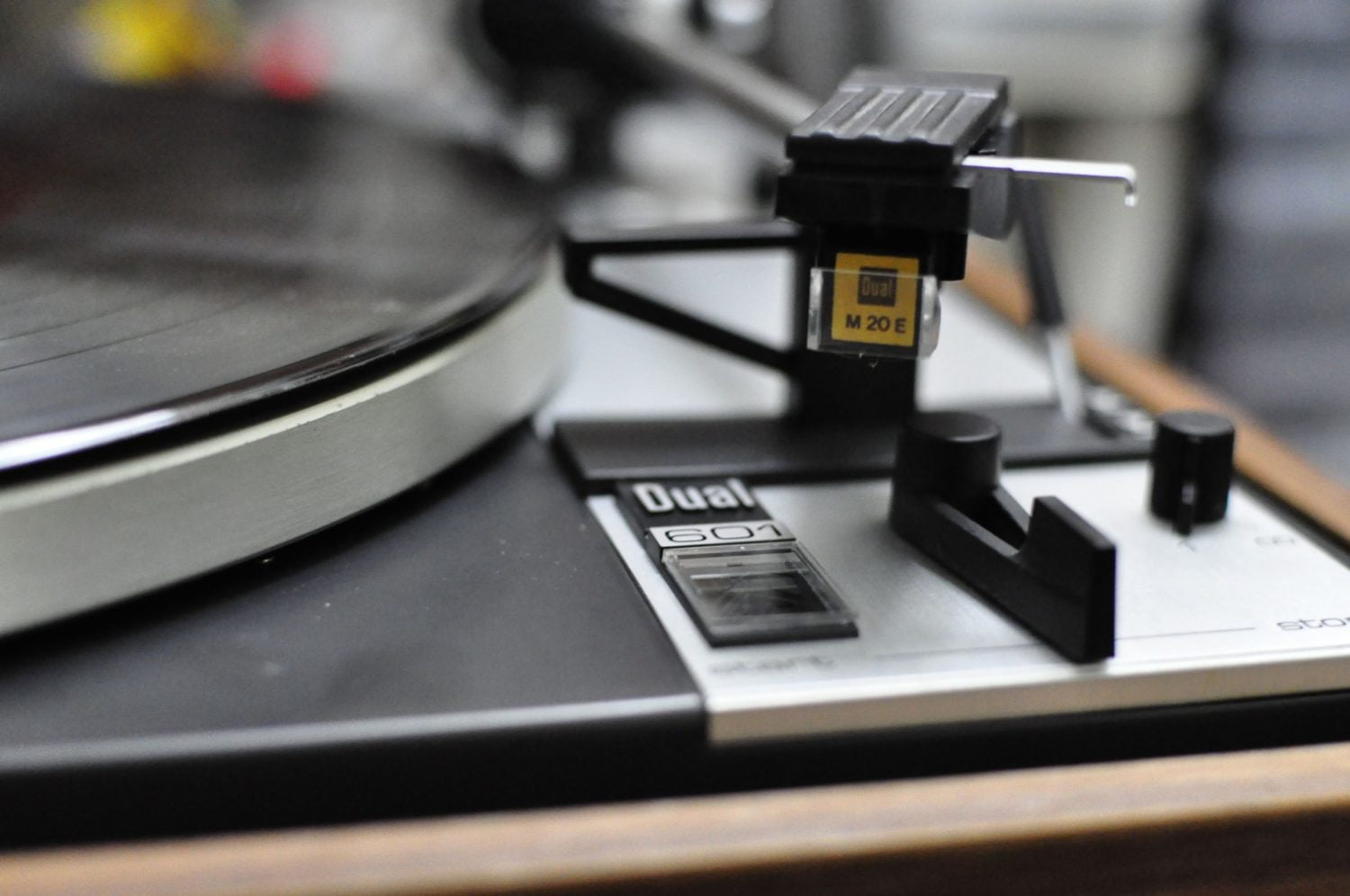


Hi, How do you remove the base. Undone the screws but seems to be stabled and glued?
Hi John, the 601, like many other Duals, uses three screws which hold the deck to the chassis. These must be loosened and moved out the slot they sit in to release the deck. Be very careful, it’s very easy to make one of these much worse if you don’t know what you are doing. These Dual decks are mechanically complex, you need several types and grades of lubricants and there are many points to lubricate and/or adjust.
Hi there, just received a 601 but don’t know where the pitch control switch is.
Hi, the first thing I suggest you do is search for a manual, that way you’ll be able to get your head around the sometimes slightly unusual Dual control layout on these older decks. Speed switching on Duals is on the left. Also, have your deck thoroughly serviced if it hasn’t been done in a few years, these mechanical decks absolutely thrive on regular maintenance and were designed to receive it.
Hi
Can the performance be improved with a replacement mat? Is there any VTA adjustment? Thanks
Hi Duncan, there’s no VTA adjustment via tonearm settings, but some adjustment can be made via the mat, careful choice of cartridge and headshell spacers. Setup and mechanical state of service are critical with these machines. They are good decks but more maintenance intensive than many others and the Dual headshell/cartridge mounting system is prone to causing trouble, so be very careful with that part of the machine.
John, I recently acquired a brand new 601 in a sealed box for 40 years or so. Everything works but the auto start and auto return. I assume the lube dried out after decades of sitting in a box. Follow your guidelines noted above?
Thanks,
Bob
Hi Bob, it’s Mike and very nice acquisition there. The deck will need a complete service to resolve the lubricant issues and shouldn’t be used until that happens. The article is a great starting point but it’s not a tutorial and there’s a ton of detail I couldn’t include. You’ll need various lubricants, solvents etc and in most cases this would be a job for a specialist familiar with these machines but if you feel like having a go, be careful and best of luck!
Hi Mike!
I was wondering if you would be open to providing the information on the lubricants that you used?
There’s so many opinions and discussions regarding this that it makes my brain spin; just another rabbit hole of endless arguments.
Would also like to know your thoughts on how you go about identifying which modern alternatives fit the bill. Many seem to reason by feel/brand loyalty but I think an expert would be the only one with the experience to draw a informed decision.
Thanks!
-Kyle
Hi Kyle and thanks for visiting! Whilst I’d love to assist, my competitors love looking for tips and information here and I generally refrain from helping them out with business/technical information and IP of this nature. I can say that I use synthetic lubricants almost exclusively and that these go very well in Dual and other older turntables. To avoid the rabbit hole, just know that removing the old lubricants and replacing them with new will resolve most issues.
Thanks Mike. Can you identify specific area’s that need to be lubed? Also do you suggest a lite grease?
Hi Bob and no problem! I suggest referencing the service manual for this and other technical information. From memory it’s well written and contains the necessary diagrams, recommended lubricants, tools, adjustments and so on. This saves me a ton of time re-writing, summarising etc!
Thank you Mike, appreciate your feedback!
Thanks for the help with the arm return! I was a little frustrated that you weren’t a bit more specific on the photo but I ran my mechanism manually a few times while watching all the things that happened and figured it out. I stuck a short piece of tubing over the whole standoff that the rubber dimmaphlochy was mounted on. It works perfectly now. Best of all, I didn’t break anything else. Cheers and many thanks!
Hi John, no problem, glad you found the article helpful!
Hello Mike, my first rebuild on an old Dual 601 and I have repaired, lubed and calibrated everything that wasn’t working. Except for the tonearm return issue. I used the service manual and obtained comparable lubes but could you point out where this rubber cam-end is located please. If you could reference the part number from the service manual, I would be extremely grateful.
Bill